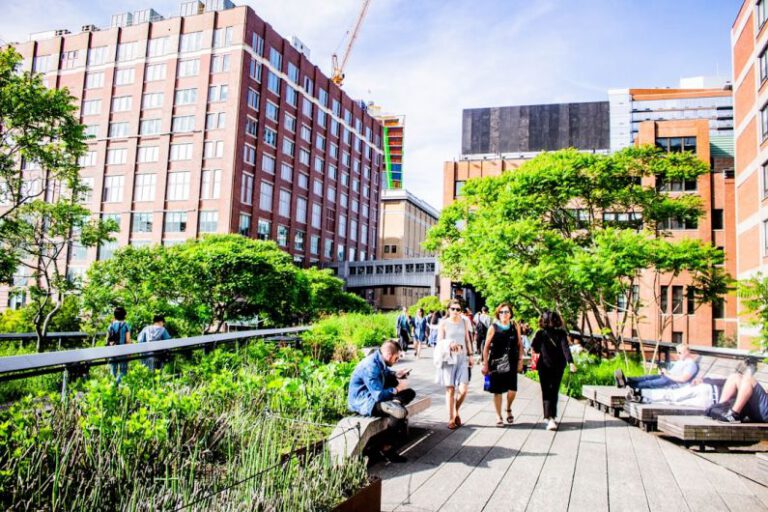The Breath of Cities: the Eden Project’s Biomes
Nestled in the heart of Cornwall, UK, lies a botanical wonderland that is much more than just a collection of plants. The Eden Project is a pioneering environmental initiative that showcases the intricate relationship between humans and the natural world. At the heart of this project are the iconic biomes, two massive structures that house a diverse range of plant species from around the globe. These biomes are not just architectural marvels but serve as a reminder of the importance of biodiversity and sustainability in our urban environments.
Unveiling the Biomes
As you approach the Eden Project, the first thing that catches your eye is the imposing structure of the biomes. These giant domes rise up from the landscape like futuristic bubbles, beckoning visitors to step inside and explore the wonders within. The biomes are divided into two main sections – the Rainforest Biome and the Mediterranean Biome, each representing a unique climate and ecosystem.
The Rainforest Biome is a lush, humid environment that transports visitors to the heart of a tropical jungle. Towering trees, exotic flowers, and cascading waterfalls create a sensory overload that is both awe-inspiring and humbling. As you wander through the winding pathways, you encounter a stunning array of plant species, many of which are rare or endangered in the wild. The diverse flora and fauna of the Rainforest Biome are a testament to the rich biodiversity of our planet and the urgent need for conservation efforts to protect these fragile ecosystems.
In stark contrast to the Rainforest Biome, the Mediterranean Biome offers a sun-drenched oasis of olive groves, citrus trees, and aromatic herbs. The dry heat and arid landscape of this biome transport visitors to the Mediterranean region, where they can experience the sights, smells, and tastes of this unique environment. From the vibrant colors of blooming flowers to the soothing shade of ancient olive trees, the Mediterranean Biome is a celebration of the beauty and resilience of plants adapted to harsh conditions.
Exploring the Connection Between Nature and Cities
The biomes at the Eden Project serve as a powerful reminder of the intricate connection between nature and urban environments. In an age where cities are expanding rapidly and green spaces are disappearing, the importance of integrating nature into our urban landscapes has never been more critical. The biomes act as living laboratories, showcasing how diverse plant species can thrive in artificial environments and highlighting the potential for green infrastructure within cities.
By immersing visitors in the sights, sounds, and smells of different ecosystems, the biomes at the Eden Project inspire a sense of wonder and appreciation for the natural world. They demonstrate that even in the most unlikely of places, biodiversity can flourish and contribute to the well-being of both humans and the environment. The biomes serve as a powerful educational tool, teaching visitors about the importance of conservation, sustainability, and the need to protect our planet for future generations.
Embracing a Sustainable Future
As we stand on the brink of a climate crisis, the need for sustainable solutions has never been more urgent. The biomes at the Eden Project embody the principles of sustainability, from their innovative design to their use of renewable energy sources. By showcasing how we can create thriving ecosystems in controlled environments, the biomes offer a glimpse of what a sustainable future could look like.
In a world where urbanization is rapidly transforming our landscapes, the biomes at the Eden Project stand as a beacon of hope for a greener, more sustainable future. They remind us that even in the midst of concrete jungles, nature has the power to thrive and enrich our lives. The Eden Project’s biomes are not just architectural wonders but living, breathing symbols of the harmonious coexistence of nature and cities.






